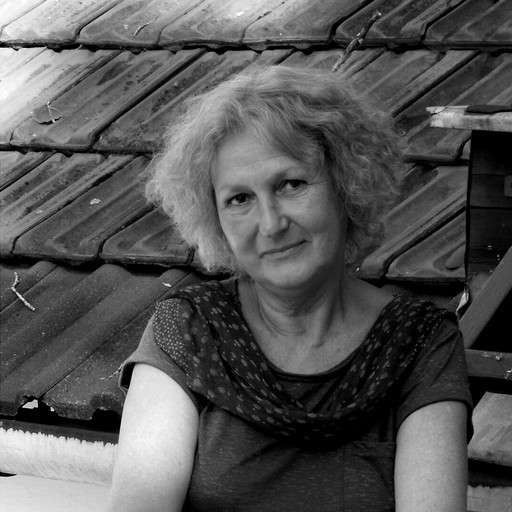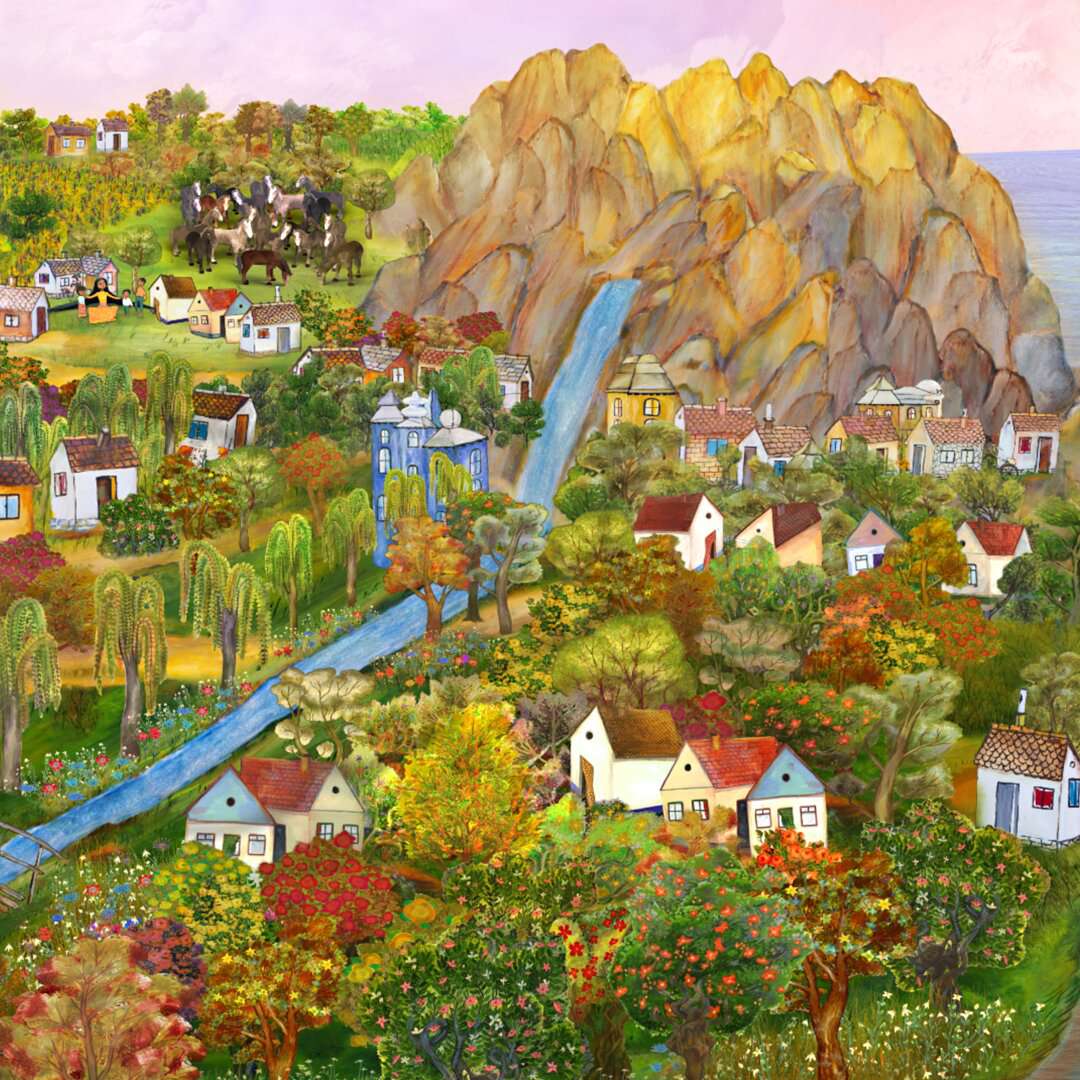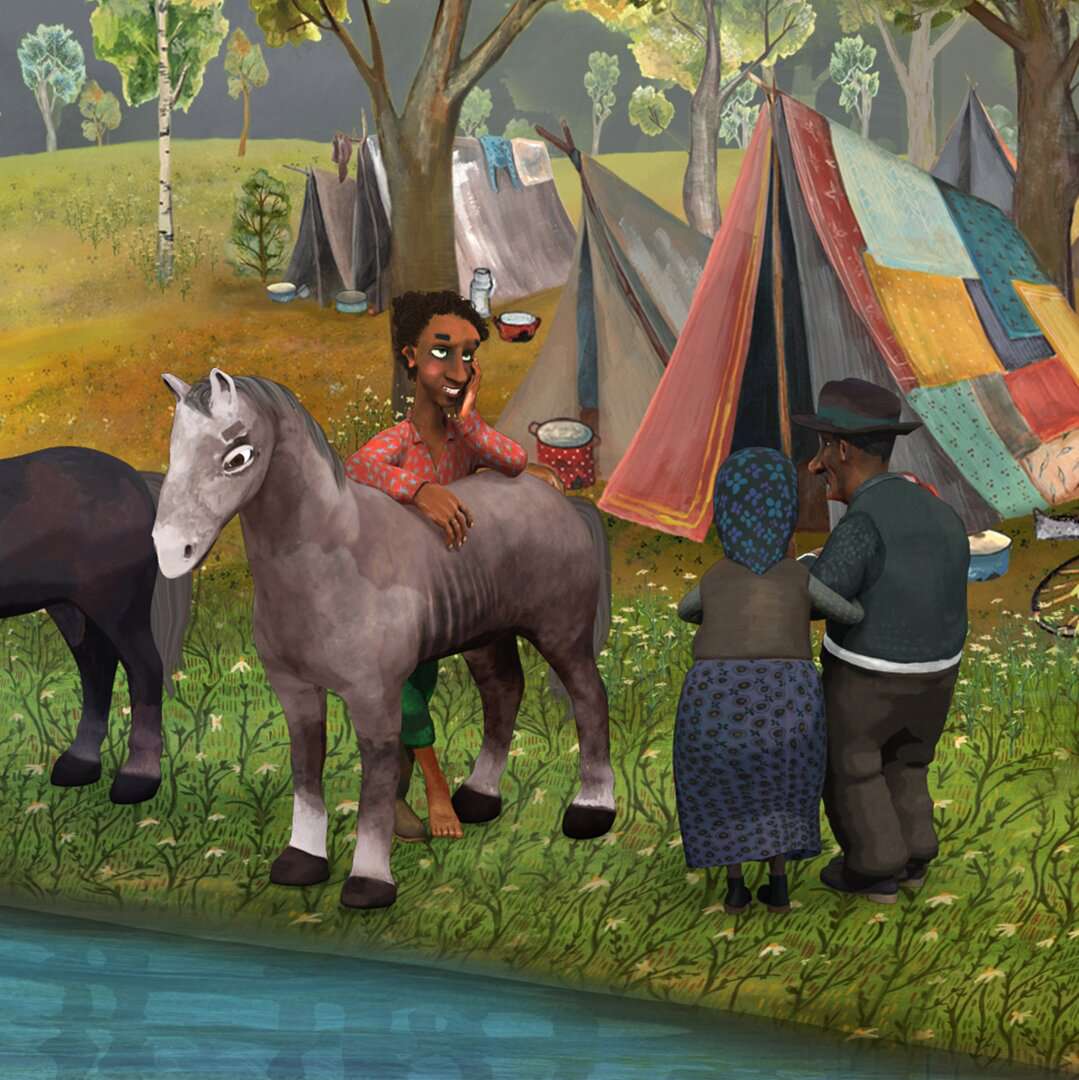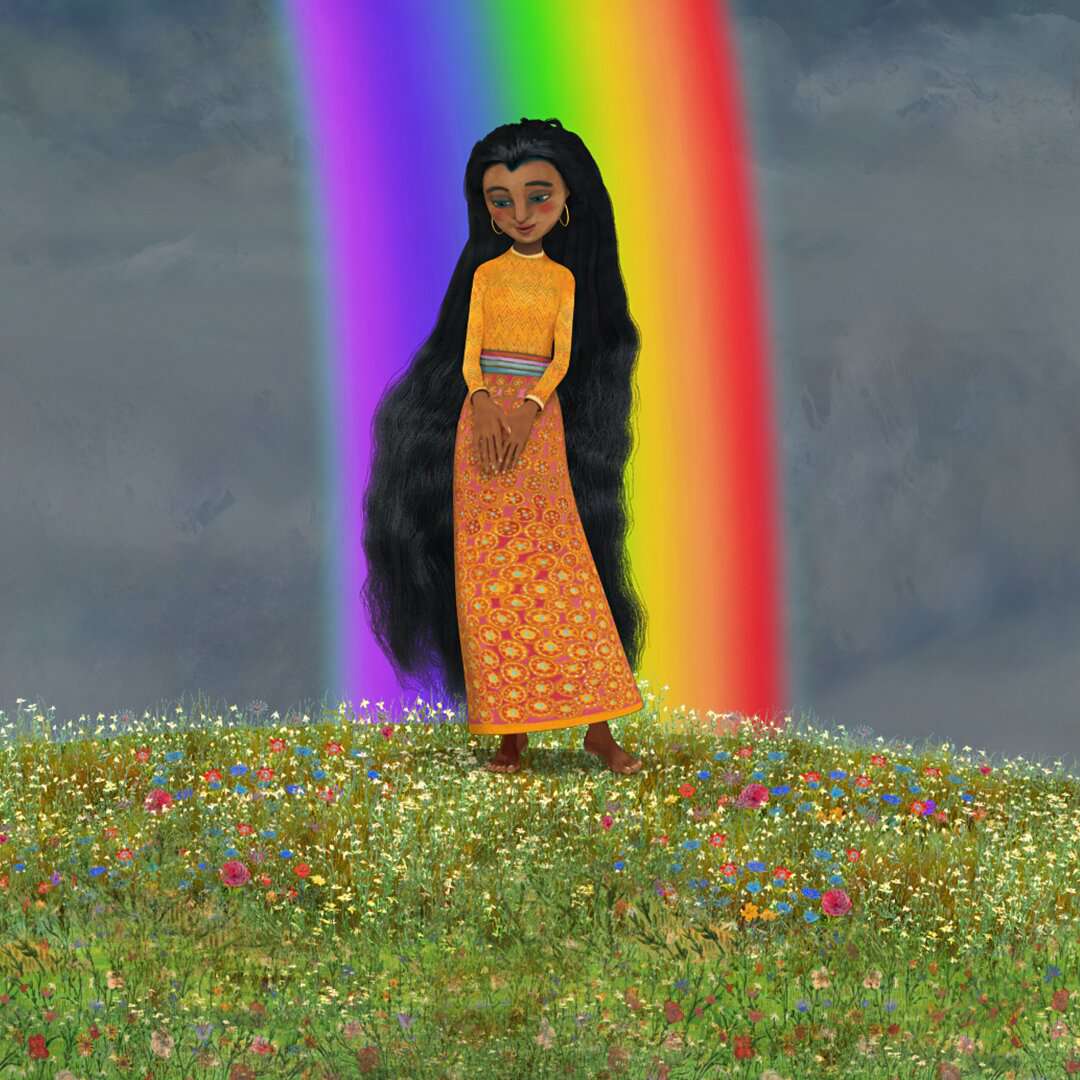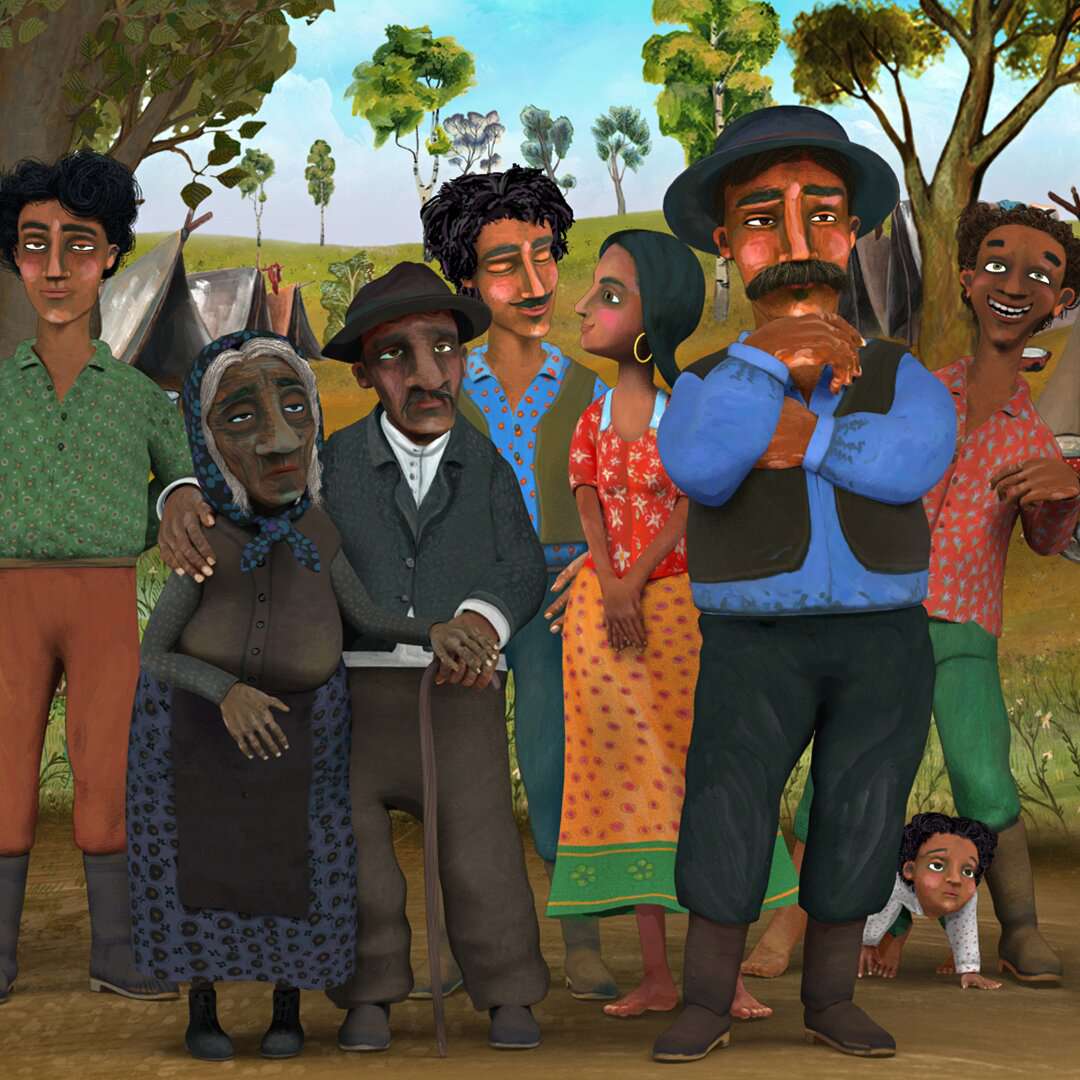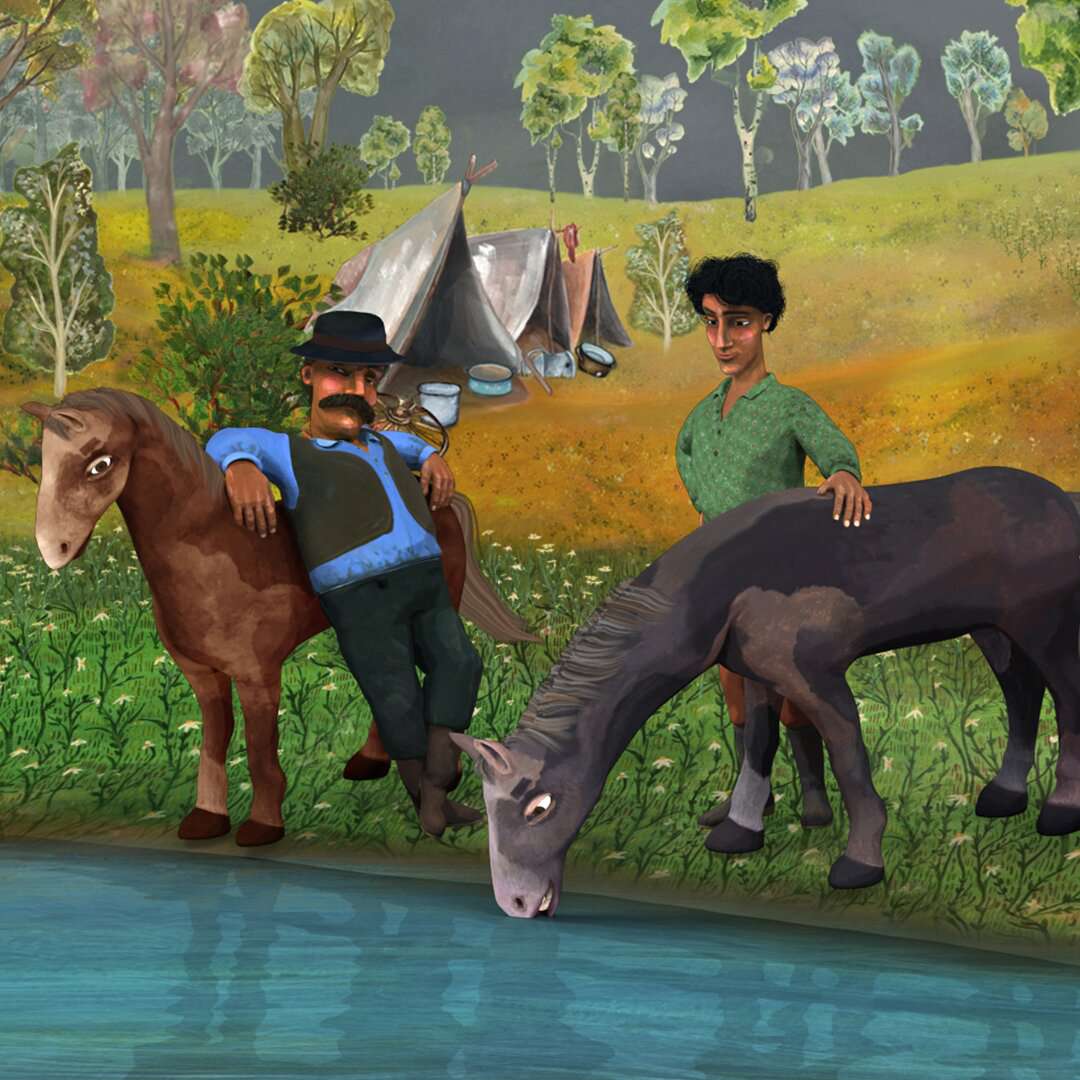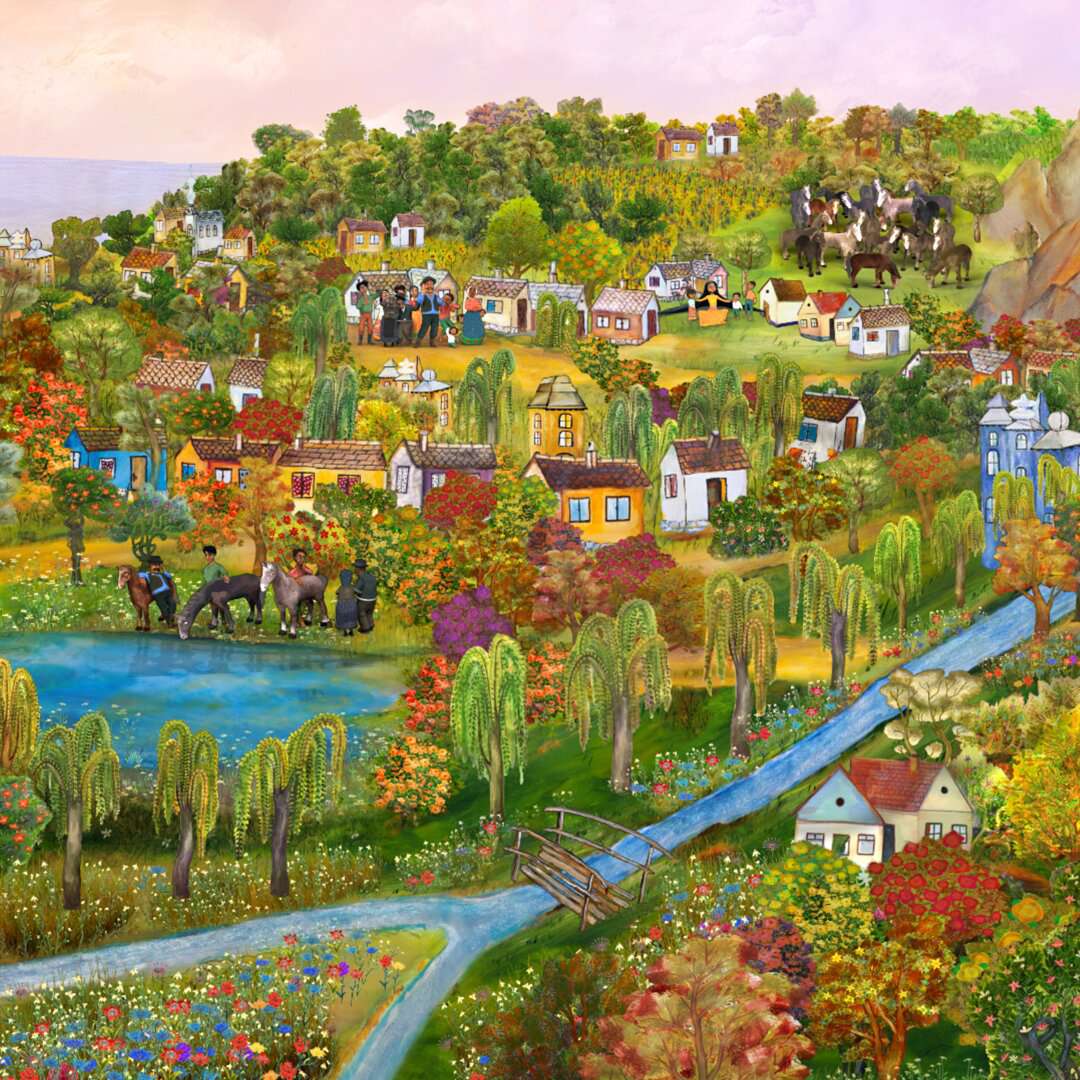In 1938 Mary Ford, an aspiring female illustrator, applied for a job at Disney Studios. In the rejection letter she received from an employee in the HR Department she read the following justification:
The Deconstruction of the ‘Other’ in Animated Films
‘Women do not do any of the creative work in connection with preparing the cartoons for the screen, as that task is performed entirely by young men. For this reason, girls are not considered for the training school. The only work open to women consists of tracing the characters on clear celluloid sheets with India ink, and then, filling in the tracing on the reverse side with paint according to directions.’1
We do not know much about Mary Ford and what happened to her afterward; most likely she looked for another career opportunity outside the cinema business.
This story reminds us that in the Hollywood film industry, women did not share the same power and creative responsibilities as men; women did not have (drawing) tools in their hands to create stories at Disney Studios, and certain female characters in animated cartoons2 displayed both gender and ethnic disparities. Indeed, these cartoons could be considered an ‘animated mirror’ of real life inequalities.3
What follows below is an examination of changes in the stereotypical representation of Roma cartoon characters, through the use of narrative and visual tools of self-representation. Our analysis is driven by the following questions: What kind of stories are chosen to depict Roma using animation as an art form and with Romani creatives involved in the process of filmmaking? How do these approaches represent new roles and new visual appearances of Romani people?
This research aims to contextualise the dominant gaze in animations where Romani people themselves narrate their own stories and where Romani characters are depicted, in order to create a counter-image of Roma. We have applied the filmmaking term ‘shooting back’ as the analytical framework, an expression which originated from ethnographic film productions using a new language to talk about one’s own traditions and identities. This term is analogue to the ‘talking back’ strategy, a term coined by Ian Hancock which refers to Roma people voicing their own opinion in written or visual forms.4
Mária Horváth was born in 1952 in Pécs, Hungary. In 1971 she joined the newly founded Kecskeméti Film Studio, where she attended pantomime, …
The examples we consider are mainly heroines – for instance, Doja in Doja the Gypsy Fairy (Hungary, 2015) by Mária Horváth, or the female narrator voices in the puppet animations Mire Bala Kale Hin (meaning literally ‘I Have Black Hair’ but released in English as Tales of the Endless Roads, Czech Republic/Finland, 2001–2003), or Laurel Price, the main protagonist in Gypsy Ways (UK, 2011), who is a Roma traveller sharing her memories in a stop-motion animation made by a group of children – as well as female directors and their collaborators (e.g. Katariina Lillqvist, Teréz Orsós, Magda Szécsi, Katalin Macskássy, Mária Horváth and others).
The gender perspective opens up new directions in studying different (and changing) roles in the (self-)representation of Roma, or more precisely the (self-)representations of Roma people in animated films.
Esmeralda, the Non-White Female Stereotype
Even though the main focus of this study is not a discussion on the non-white minority representation in the history of animation, it is nevertheless important to mention a few examples in order to demonstrate the stereotypical representation of the Other by the mainstream animation film industry. One of the most quoted examples in terms of a widely criticised depiction of a non-white female character is Esmeralda in the 1996 film The Hunchback of Notre Dame.
Although there have been several adaptations of this classic story by Victor Hugo, Esmeralda remains a fixed character in all these works. She is considered a heroine with ‘permanent features’ (romantic, exotic, dirty, poor), and described as a stereotypical Roma woman character.5 Regardless of the creators’ intentions, the ‘beautiful [G]ypsy Esmeralda’ is not able to break out of her role, and she remains an objectified and commodified ethnic body.6 Even though there are also studies emphasizing her ‘active, much more adult’ character,7 compared to her white princess ‘colleagues’, these approaches might dismantle some previous stereotypes (e.g. Esmeralda as an exotic figure) but at the same time contribute to yet another stereotypical representation of Esmeralda.
The Hungarian counterpart of Esmeralda is Szaffi, the poor and disheveled ‘Gypsy girl’. The 1984 film adaptation was a great success in Hungary, and just like the The Hunchback of Notre Dame was based on a novel (Mór Jókai’s The Gypsy Baron) written in the nineteenth century. Both female characters are products of romanticism, and accordingly embody the stereotypical freedom-loving Roma female characteristics. These features remained in twentieth-century representations as well, especially in animated films where, in borrowing from literature, they have become permanent. As a result, stereotypical representations spread to cartoons and films and became almost the traditional way of depicting Roma.8
Research on the representation of non-white women in cartoons has become part of the scholarly curriculum for a few decades now.9 These studies usually focus on how the non-white heroines in animated films are visually represented in stereotypical and exotic ways, and in some cases in racist tones. Since these cartoons are made especially for children as a family entertainment product, it is also important to consider the impact of these representations on children.
In the white-dominated Disney movies, where the ‘Others’ are often mispresented, children cannot find non-white characters to whom they can relate, and consequently non-white children are unable to create a positive self-image because these films only reproduce hegemonic attitudes. Although the world of fairy tales and their adaptations have ‘traditionally’ been made up of features with one single (and easily understandable) distinctive character (rich–poor, beauty–beast, good–bad), the authors of contemporary tales have rather created more complex figures, due perhaps to the impact of the postcolonial discourse, which inquires about the construction of various identities (e.g. ethnic or gender) and problematises reductionist binary views.10
The Stories behind Animations
The culture of storytelling among Roma communities has always been an important cultural practice which keeps traditions alive: stories, myths and legends are passed on from one generation to another, connecting the past with the present. The oral tradition of storytelling has always been crucial for imparting traditional knowledge, shared ancestry and history.11
These stories (called paramisi in Romanes) serve both entertainment and educational purposes, and are narrated to members of the community by the storyteller, a role shared by men and women alike. More specifically, women mostly tell stories in family surroundings while men are responsible for public events.12
In most cases, storytellers’s sources are based on folk tales,13 incorporating magical and witchcraft characters, scenes, events, and locales. While the relationship between the myth and fairy tale has been approached differently by various researchers,14 the most important feature of a myth being transformed into a tale is the process of desacralisation.15
Doja, the Gypsy Fairy is one episode from a Hungarian animation series titled Cigánymesék (‘Gypsy Tales’), which is based on a collection of tales written by a Romani female writer, Magda Szécsi. Her stories are about the history of Roma, and how the colourful world of the imagination could be a metaphor for the painful reality.16 In the animation, these two worlds – imagination and reality – are intertwined.
Katariina Lillqvist, a Finnish–Romani animator and film director who specialises in puppet animation, has also collaborated with a Romani writer, the Slovakian-born Margita Reiznerova, to complete a series of six self-contained animated shorts based on Romani folktales, Mire Bala Kale Hin (literally meaning ‘I Have Black Hair’, it was released in English as Tales from the Endless Roads) (Czech Republic/Finland, 2001–2003).17 In the 2001 series prologue, Lillqvist presents legends of Roma origin: a grandmother tells her granddaughter Marushka the story of how Roma people had to leave their place of origin in India after a big catastrophe, and how over centuries they migrated to Europe and dispersed, reaching regions as far north as Finland.
Instead of analysing the sources (i.e. myths, legends and personal life stories) of storytellers from psychological and sociological points of view, we should consider the political aspects of the tales especially when they are inspired by difficult times in someone’s life, and are embedded in reality.18 Such analysis is more appropriate for examining means of Roma self-representation as a strategy against inequalities experienced by the community.
The postcolonial approach aptly reveals not only the heterogeneity of the Romani people, but also highlights the presence of other oppressed groups in films, such as women, who have limited access to the mainstream cinematic world and are usually depicted in stereotypical roles. For example, we should consider the intersectional attitude in Szécsi’s writings, where the heroines are mainly Romani women who fulfil traditional roles in Romani families such as doing household chores and taking care of the family (Békési 2010).
Animated Reality
Paul Wells, who has written extensively about the theory of animated film as an artistic form of expression, explains in his 2013 book Understanding Animation:
‘[A] cartoon’ [read “animated film”] has the capacity to carry important meanings and engage in social issues. In short, the animated film has the capacity to redefine the orthodoxies of live-action narratives and images and address the human condition with as much authority and insight as any live-action film.’19
For many people, animated film is synonymous with folk stories and fairy tales. Producers and directors like Walt Disney in the West and Jiří Trnka or Yuri Norstein in the East have successfully explored the potential of animated film to bring to life fantastical, imaginary, visionary or metaphorical worlds beyond our physical realm. Until recently, animation was more suitable for convincingly illustrating magic and fantasy rather than live-action film. Moreover, since Walt Disney consciously aimed to address a broad family audience, these universally known and appealing folktales were a perfect subject.
‘Grab my hair and hold on tight,’ Roma fairy Doja tells the Romani people, ‘Don’t be afraid’. Then the fairy and her people take off and fly for days, until they reach Romaland, where they are destined to live. This land is a heavenly island full of tamed animals and fertile soil, where the Roma community can finally live as other people do, building houses, working hard and living decently according to the law.
After an unexpected catastrophe, the people no longer feel secure on the land, neither do they trust Doja to be able to defend them. Therefore, they ask Doja to take them (and all their belongings) far away, while they cling on to her long hair. Despite Doja being fully aware of the consequences of displacement, she fulfills the Roma people’s wish and flies away with them, resulting in their dispersal all over the world.
Doja, the Gypsy Fairy is a striking film. We are drawn into a mythical world even before the actual tale unfolds – the deep and intense colours, the drawings with folkloric motives establish the diegetic reality within seconds, and instinctively we know where we are: in a fairy tale, in the realm of imagination. At the same time, as with all folk tales, the story metaphorically deals with important issues that are deeply rooted in the collective subconscious and history. Furthermore, Doja is situated at the point where the storytelling tradition, which is so important for Roma communities, meets the contemporary genre of the animated film with tales that aim to present a sense of identity and belonging while consolidating the group consciousness and cohesion.20
Doja, the Gypsy Fairy was part of the Gypsy Tales series, which was produced in the Kecskeméti Animation Studio, where the beloved Hungarian Folktales series had been made for state television for over thirty years. Hungarian Folktales was based on ethnographic research and authentic folk music, applying folkloristic ornaments in a graphical style.21
The director, Mária Horváth, who was involved in the production during Socialist times, initiated the Gypsy Tales series (Hungary, 2015) in what was to become a fruitful collaboration. Her intention was to bring the traditional tales of the Roma people into ‘mainstream’ television, in the hope of generating a reception which was as successful as Hungarian Folktales had been.
The visual language of Gypsy Tales is based on impressive colourful paintings by a Romani painter, Teréz Orsós, which greatly contributes to the success of this award-winning animation series. Moreover, the characters are dressed in clothes designed by a well-known Romani designer, Erika Varga, the founder of the Romani Design Studio, and the music is by Parno Graszt, a Roma music ensemble in Hungary. With the initiation of the Gypsy Tales the film is as closely related to the cultural traditions of the Roma as it is to contemporary art.
The prologue of Lillqvist’s Mire Bala Kale Hin / Tales from the Endless Roads (Czech Republic/Finland, 2001) is a mixed-technique film with puppets and traditional 2D animation: the grandmother, her granddaughter and the girl’s family are puppets, while the 2D animation depicting the Roma voyage is simple and stylised with metaphorical drawings animated over old maps. Although the grandmother mixes real events with short fictionalised anecdotes, this story of Roma origin resembles the real story much more closely than does Doja, the Gypsy Fairy. If we accept that there is no historical truth without a mythological level,then Tales from the Endless Roads can indeed be considered an instance of historical storytelling.
Song of the Gallows (2002) is another animated short in the Mire Bala Kale Hin series, based this time on a Finnish folktale. It evokes a time when the Romani people were brutally oppressed; the story mentions a law which permitted Finnish peasants to hang any Romani person they encounter. The puppet animation depicts the struggle of Romani people against this law, and how they overcame it due to the richness of their culture, especially their magical music. Song of the Gallows tells a grim story far removed from Disney-like escapism; as is generally the case with folk tales, the pictures and metaphors deal with reality, history, social behaviour, morality and essential truths. Both films in the series are masterful examples of puppet animations.
Katariina Lillqvist perfected her profession at the famous Jiří Trnka Studios in Prague. Her years of training laid the intellectual and technical foundation for her future puppet animation filmmaking. Her works, including the Mire Bala Kale Hin series, are inspired by the central European tradition of puppet-making and puppet animation; moreover, there is a deeply rooted history of puppet theaters, which are as highly regarded today as they were before the fall of communism. Jiři Trnka was one of the most famous representatives of puppet animation in the 1950s and 1960s in Czechoslovakia, popularising the stop-motion animation technique in the region and beyond. Sadoul and Morris summarise the Czech master’s animation toolbox by quoting him: ‘Puppet films are truly unlimited in their possibilities: they can express themselves with the greatest force precisely when the realistic expression of the cinematographic image often faces insurmountable obstacles.’22
The stylised simplicity of faces in puppet animation – the reduction of facial expression to the strict minimum – leaves the spectator plenty of space for his or her own projection. In fact, the simpler a face, the more people it can represent; this is what gives animated film almost limitless potential for projection and identification.
Whereas in the Song of the Gallows, the Roma are victims who overcome their social status thanks to their unique qualities and talents, Doja, the Gypsy Fairy shows the Romani people as an autonomous, self-determined people who are responsible for their own fate. As Lázár writes in her synopsis, ‘[t]hese tales could be reinterpreted through a symbolical reading and referenced to a much closer present. In spite of all these hints to the recent situation, the representation of the power of independence is the main intention’.
In the past twenty years, animated films have successfully started to explore topics in the ‘real world’. Due to the feature-length films like Persepolis (Marjane Satrapi/Vincent Paronnaud, France/Iran, 2007) and Waltz With Bashir (Ari Folman, Israel/Germany/France, 2008), animated film has not only proven itself well suited for reflection upon real life, reality and true stories, but also reaches a wider audience with greater acceptance.
The means of reenactment are more appropriate in participatory projects focusing on the process of animation being made by children and related to personal life-stories. These kinds of community projects become part of the collective memories through the very act of making collaborative animation. It is less about the quality of the aesthetics of stop-motion animation and more about the creative process as a way of working with collective memories. This type of animation is where the performative act of storytelling returns: the way the storyteller passes the story on to the audience is echoed by the gestures of the reenactment with animated figures.
For example, the female storyteller in Gypsy Ways (UK, 2010) is Laurel, an elderly lady from Shirenewton, a Gypsy and Traveller site in Cardiff, Wales, UK, who recalls her memories from her childhood until the present. Children from the community make drawings of her life story and reenact this personal narrative with stop-motion animation. Laurel’s personal history is primarily based on stories about her female relatives, especially her mother, recounting the roles of women in the family and the responsibilities of women within the Roma community. Even the ‘Queen of Gypsies’ (referring to a hundred-year-old lady from Cardiff) appears in the short film as an animated drawn figure.
In 1976 the Hungarian director Katalin Macskássy used a a similar reenactment method for a short animated documentary entitled Nekem az élet teccik nagyon (‘I Pretty Much Like Life’, Hungary, 1976). Children from a small village in southern Hungary share stories about their own difficult living conditions, about their families and about the relationship between Roma and non-Roma inhabitants in the village, and tell viewers how they imagine their future.23 The animated film can go wherever a camera cannot reach – into the past, into secret places, inside a person’s mind. As Orosz writes, ‘The specialty of this film technique is that the film crew, such as writers and illustrators, are the protagonists of the film itself. In the pictures painted by the children, we hear sometimes surreal but smiling, but mostly heartbreaking stories.’24
In the last few minutes of the film we see the children while they are drawing; each speaks a single sentence, and a young girl says: ‘In my life, the best and most particular moment was making this animation’. We don’t know what happened to the girl in the future, but it is most likely that she did not go on to work in the film industry. Her testimony, unlike that of other children, was rather cheerful than traumatic. She discusses making animation not as a future aspiration, but as a chapter from the past to be closed, perhaps wisely foreseeing the realities of 1970s Hungary. Almost forty years later, the aforementioned creative Romani women seem to have been realising the dreams of this little girl by reenacting her movements while sharing the joy of creativity, and even going beyond this point by extending these characters to the film screen and international success.
Conclusion
Although the aforementioned films from the RomArchive have different objectives, intentions and production backgrounds, they encourage us to reconsider how the conventional, somewhat stereotypical image of fairy-tale, non-white heroines can be challenged by choosing narratives written and told by Roma women. These adaptations offer new insights into the representation of female characters, allowing stories to be recounted in their own voices as a form of empowerment.
These films also demonstrate the interconnection between ‘talking back’ and ‘shooting back’ strategies. In order to resist a one-dimensional view of these women-centred fairy tales, these films proved that by working with one’s own personal stories or narratives of the collective memory, especially with visual elements created by Roma artists, an opportunity is in fact provided for female-authored tales to create a counter-image of Roma. Furthermore, this strategy can prove fruitful for deconstructing the classical tales and eliciting unexpected approaches from women. Finally, besides considering animated films as family entertainment with children as the main (and most sensitive) audience, we should also acknowledge the potential of animated films as part of the contemporary cinematic world, where the different languages of film and fine art are uniquely combined.
Rights held by: Eszter Lázár — Christian Gasser | Licensed by: Eszter Lázár — Christian Gasser | Licensed under: CC-BY-NC-ND 4.0 International | Provided by: RomArchive




